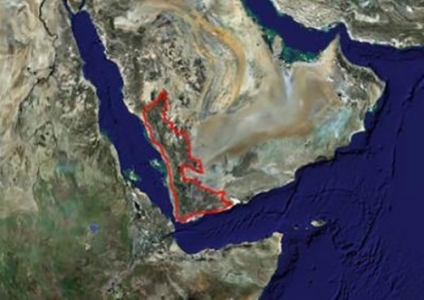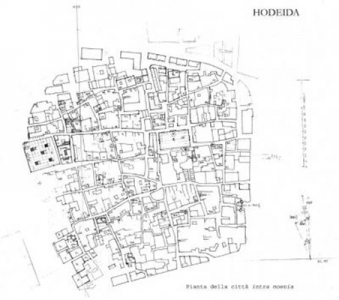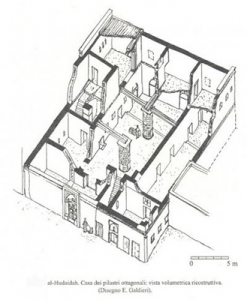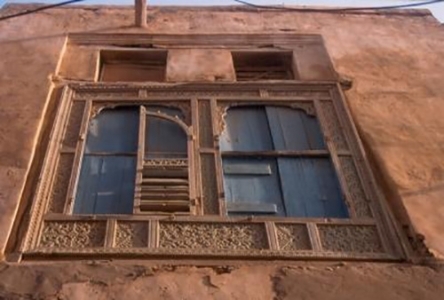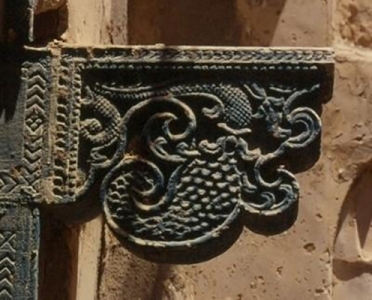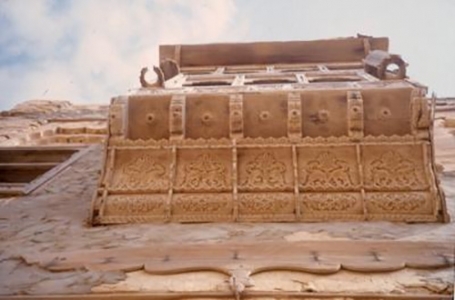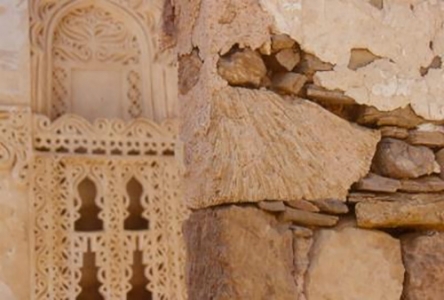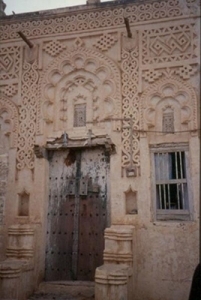Hodeida town planning and the Red Sea coast of Tihama (Yemen)
The Yemenite coastal area on the Red Sea underwent a significant urban development between the 18th and 19th century due to the busy mercantile routes connecting Indian Ocean to Europe that developed above all for of the coffee trade.
The city located farthest in the North is Lohayya, the one located farthest in the South is Mokha (the homeland of coffee exportation); Hodeida is situated more or less in between the two. The urban fabric of the towns dates back to the late Ottoman period; the historical buildings and rich architectural decoration, both in wood and in stucco that characterize the multi-storeys constructions give life to the so-called “Red Sea style”. Researches have been extended also to another town on the coast, Khokha, as well as to the inland centres of the same Tihama region, such as Zabid, Bayt al-Faqih, and Hayys.
The team at present is composed of three members: Maria Vittoria Fontana (Architecture and architectural decoration), Roberta Giunta (Arabic Literature, and Islamic Epigraphy), Simona Artusi (Electronic Data Processing, and Word Processing). The mission avails itself also of the work of Danilo Rosati (Draftsman). We should mention the late Eugenio Galdieri (town planning), the author of the city plan of Hodeida, unfortunately dead in 2010. The first survey of the area dates back to 1992.
Researches mainly focused on the town of Hodeida. Its first mention dating back to 1454-55, Hodeida does not constitute an ancient settlement. Its urban development can be traced thanks to the European literary sources beginning from Carsten Niebuhr in 1763. Since the mid-nineteenth century, the town was ruled twice by the Ottomans, the last domination – which started in 1872 – coming a definitive end in 1934.
Hodeida area was rich in buildings mostly used as trading representation places, but they were often used also as private residences by rich merchants, obviously for reasons of safety and control. They tended to transfer in their new houses some of the architectural or decorative elements characterizing their homelands: at the height of its splendour (19th century), in fact, Arabs, Banians (Indo-Pakistan expatriates who originally settled in Madagascar), Indians, Persians, Greeks, and, obviously, Turks and Egyptians either frequently visited or permanently lived in Hodeida.
- Maria Vittoria Fontana, Eugenio Galdieri, Roberta Giunta & Lucia Caterina, al-Hudaydah, Yemen: una lettura pluridisciplinare. Primo rapporto preliminare (1997), Annali dell’Istituto Universitario Orientale, 58/1-2 (1998), pp. 111-142 [In questo rapporto preliminare sono vagliate le fonti europee che, a partire da Niebuhr (1763), ci forniscono informazioni storico-urbanistico-architettoniche su questa città (M.V.F.). Viene presentato un primo schizzo planimetrico, eseguito con il sistema della celerimensura (metodo di misurazione rapida), che consente sia di identificare il perimetro urbano di specifico interesse storico e documentario, sia di posizionare al suo interno un numero ragguardevole di edifici storici (più di cento) in parte già rilevati e qui presentati (E.G.). Capitoli importanti sono, inoltre, quello dell’epigrafia – riscontrabile sui portali e sulle facciate di questi edifici (R.G.) – e quello della decorazione architettonica in legno, stucco e mattoni – sia all’esterno sia all’interno di questi (M.V.F.). Conclude questo rapporto preliminare un contributo su alcuni frammenti di porcellana cinese rinvenuti nel corso di una raccolta di superficie a Mokha (L.C.)];
- Roberta Giunta, The Talismanic-religious Nature of Late Ottoman Inscriptions in the Tihāmah cities, Proceedings of the Seminar for Arabian Studies, 32 (2002), pp. 269-279;
- Maria Vittoria Fontana, The Islamic Tihama Project of the Italian Archaeological Mission in Yemen, Sapienza University Days in the Republic of Yemen, Sana’a, 27 – 31 October 2007.
- Università Orientale di Napoli
- Sapienza



